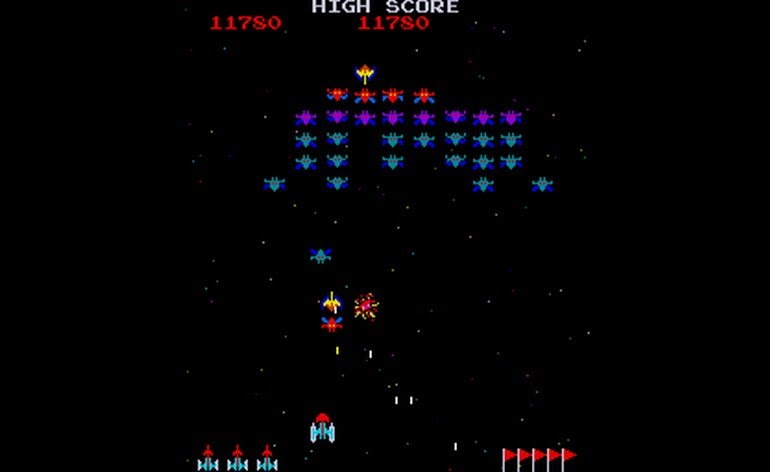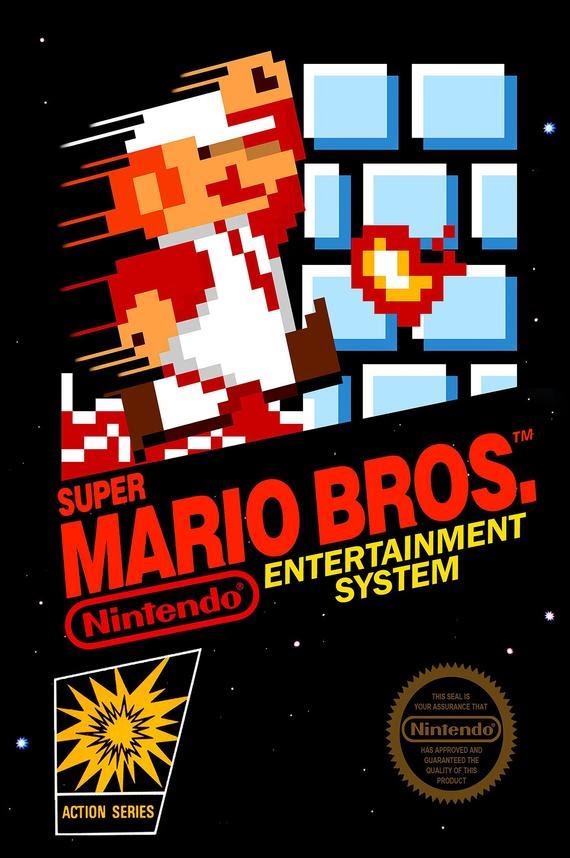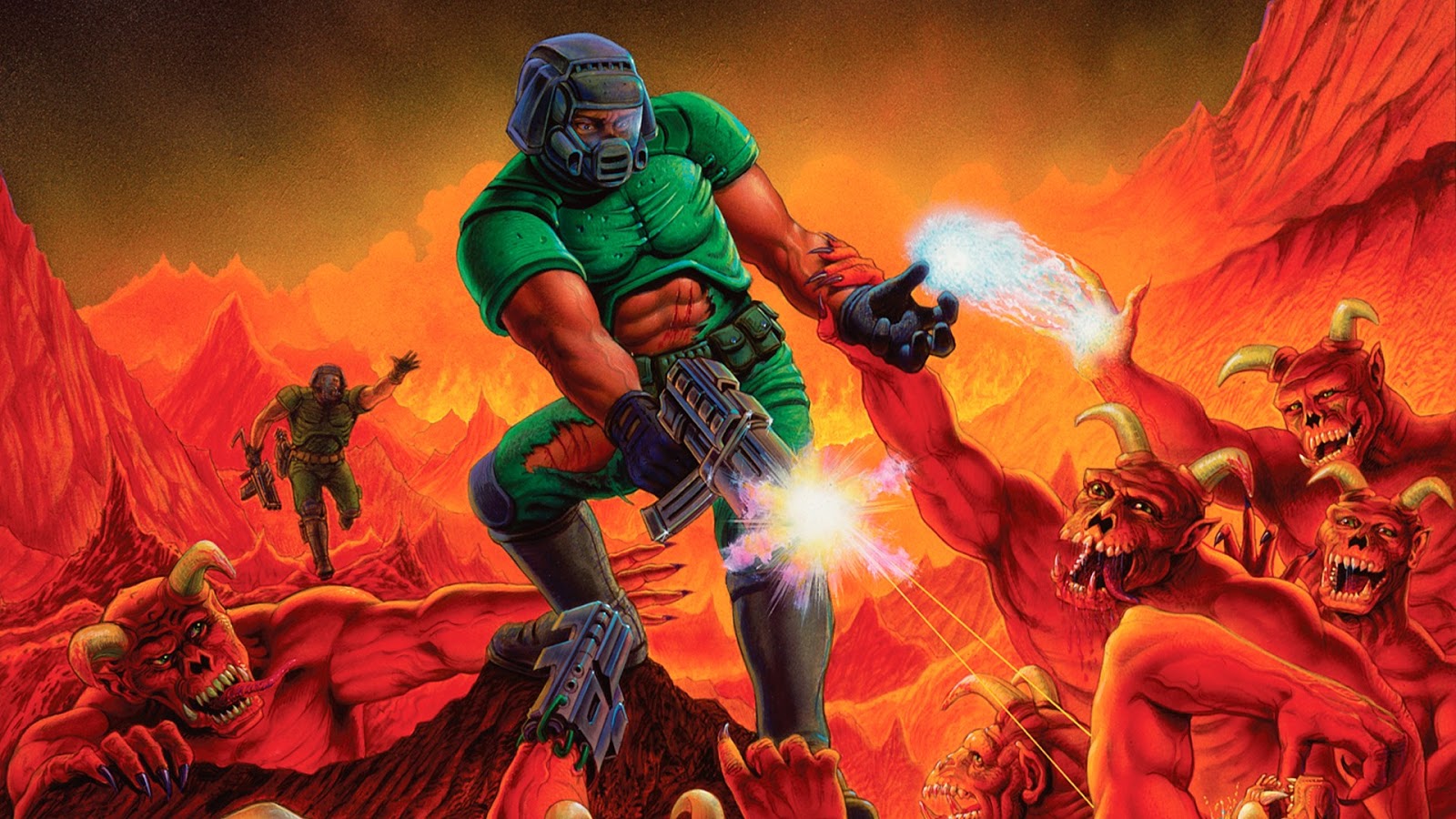
Steve McNeill is a well-known UK TV host, podcaster, stand-up, streamer, actor, and also a very passionate gamer who co-wrote Dara O Briain's Go 8 Bit , a popular British TV show about video games.
In 2019, Steve released a book called Hey! Listen !, a kind of " In Search of Lost Time" for gamers, - this is how one of the reviewers assessed the book, thus highlighting two of its main features: careful restoration of the genealogy of the gaming industry and a deeply personal, caring attitude to the events described. The book has recently become available for the Russian-speaking reader.
Hey! Listen! - a very solid sightseeing tour of the past of the gaming industry. Each of the 12 chapters is devoted to an important period or landmark event in the history of game development, so that the reader receives a compactly packed chronicle, covering the range from the 1930s to the present. The author's main focus is on the 1970s and 1980s, the "hot" period that, according to McNeill, shaped the entire face of the modern game industry.
At the same time, McNeill's approach is far from academic, and the book itself is least of all similar to a classical textbook. The account of the events is now and then interrupted by the author's comments and digressions. In some cases, for example, he shares his personal emotions from the game, in others he makes hooligan jokes, and in the third he plays the reader by throwing in an incredible version.
It seems that such inserts should work to create an informal perception: the reader seems to be at a stand-up show. But sometimes these somersaults come out slightly tortured and unfunny. It seems as if Steve needs to joke at all costs and demonstrate "geekness" even where no one demands it. But in general, this is the only serious drawback of the book, and it does not negate its merits. By the way, another feature of the book is small additional accents on British game development.
At the origins of the "golden age"
The emergence of the modern game industry McNeill discovers in the 30s of the last century, when electromechanical pinball machines appeared in the bars of Chicago and other American cities . They quickly became popular - both among gamblers and among criminal structures that “laundered” money through them.
However, due to legislative prohibitions and restrictions, by the end of the 1950s, the production of pinball machines became unprofitable. Service Games took advantage of the situation and bought some of the unclaimed machines for the game rooms of military bases in Japan. Service Games later renamed Sega Enterprise Ltd... and moved on to developing their own assault rifles (for example, the Periscope military submarine simulator). At the same time, other companies, including Namco and Nintendo, started to manufacture slot machines. McNeill believes that the use of a coin-changer was a powerful stimulus for the development of the then “gamedev”, which, combined with the growing demand for arcades and gambling ( pachinko ), opened a window of super-profit even for start-up companies.

Magnavox Odyssey
In the same years, in the USA and Europe, enthusiastic programmers began to develop the first computer games, from versions of checkers, chess and tennis to the Spacewar developed by Steve Russell ! (1962), in which the player controlled a starship in outer space using controllers connected to a computer. The game spread to computing centers, and one of its many fans, Nolan Bushnell , attempted to port the game for slot machines in amusement parks. Not very successful, but sufficient to create Atari- the future giant of the gaming industry. Another attempt to create a "port" of Spacewar, but for home use in conjunction with a TV, eventually became the basis for the appearance of the first commercial game console - Magnavox Odyssey .
The first commercially successful computer game in history was Pong (1972). Simple and fun to play, the first Atari product to be sued, Pong revolutionized the nascent industry. Due to their incredible popularity and low cost, the Pong machines brought unprecedented profits at that time. In addition, in the winter of 1975, after lengthy negotiations, Pong was released on Sears Tele-Games home consoles. - and the first 150,000 copies were quickly sold out.
Of course, Pong has a large number of clones and versions - helped by the spread of the chip technology, which can accommodate several games at once. And there are a lot of consoles themselves: in addition to Sears and Odyssey, the Japanese Nintendo Color TV-Game , Coleco Telstar , portable Auto Race from Mattel and others entered the market .
All of this, McNeill believes, led to a new stage in the history of video games, which by the summer of 1978, from "entertainment for the elite", had actually become big international business.
The rise and fall of the market
Another fundamental shift in the late seventies was the widespread use of microprocessors in arcade machines: now games were created not by electronic engineers, but by programmers. The late seventies were an exciting era in the dawn of games as a format.

Galaxian
“The availability and benefits of microprocessors have allowed the creation of games with more complex graphics, vector monitors have introduced high-resolution images to gamers. But besides them, there was a third innovation that literally graced the industry - color! Yes, before that there were separate color monitors here and there, but none of them made such a breakthrough as [...] Galaxian did. She was not only colored, but combined several colors in each sprite. "
In the same period - the "golden age of arcade machines" - the legendary Pac-Man and Donkey Kong (Nintendo's debut on the American market) are released. The success of the games was overwhelming. They stood out favorably against the background of numerous sports simulators and "shooters" and, in addition, used animated "cutscenes" to immerse themselves in the plot and get to know the characters. For the first time, the goal of the game was not to get the "best score", but to complete the game and find out how it all ended.
However, skyrocketing supply and severe declines in demand (also due to the penetration of home consoles) have led to a crisis in the arcade machine industry. A little later, the crisis overtook the "console". The aggressive strategy followed by most companies flooded the market with a multitude of games, often of simply hacky quality (one of the reasons McNeill believes was the then inattention to development and to the game developers themselves). The culmination was the extremely unsuccessful release of the ET game based on the Steven Spielberg film. Low sales (with a circulation of 5 million!) And a phenomenal number of returns from disappointed customers were a blow not only to Atari's reputation.
. Atari . . , . , . , , 5 40. [...] , , .
Nintendo
However, in the shadow of the console market, computer games developed very actively, albeit imperceptibly for many,: the first adaptations of arcade entertainment, the first projects with three-dimensional graphics (Maze, Microsoft Flight Simulator), the first text adventure games (Adventureland, Zork) and adventure games with animated graphics ( King's Quest), the first role-playing games (Akalabeth, Ultima, The Black Onyx). They became hits among users and brought good profits to the authors, despite the underdeveloped distribution system and piracy. And the market itself was fragmented due to the growing number of competing machines. The release of inexpensive devices from Sinclair (ZX80, ZX81, Spectrum) and Commodore (C64) played a positive role. McNeill calls their widespread adoption a "gaming revolution" that has inspired many people to create and sell their own games.

Super Mario Bros.
One of the most inspirational parts of Hey! Listen! - this is the story of the entry into the world market of the NES console from Nintendo. Not a very successful launch of Family Computer (Famicom) in the Japanese market, distrust of distributors in the United States to the next console, disrupted negotiations with Atari, the start of sales during the most difficult period (Christmas in New York) - and as a result, an amazing success that happened thanks to the release of the game by Mario Bros the Super .
Super Mario Bros. «-», , . — , .
Nintendo managed to subjugate the market, obtain exclusive production rights from other companies, and dictate its terms to publishers. This had a beneficial effect on the market weary of second-rate console products - every Nintendo game passed the strictest control. The year of final consolidation of Nintendo in the American market was 1987, when Metroid , Punch-Out came out for the console !!! and The Legend of Zelda , which gained huge popularity, and amid growing audience, a free hotline was opened for questions with the passage and the publication of its own magazine Nintendo Power was launched. The next triumphant step was the GameBoy handheld console , often with Tetris included (and McNeill enthusiastically talks about the twists and turns of the history of the rights to the game of Alexei Pajitny).
It seemed that Nintendo simply left no chances to competitors. But it was not there. In 1989, Sega released the 16-bit Genesis console in the US . Thanks, on the one hand, good "hardware" and, on the other, dissatisfaction with the authoritarian policies of Nintendo, Sega was able to attract companies such as Activision, Electronic Arts and Disney to the production of games. The hedgehog Sonic , the Sega mascot, also played a role in the popularization (a separate chapter is devoted to the chronicle of its development). Nintendo's response was the SNES console and a host of new games across a wide variety of genres (such as super successful Street Fighter 2 ), as well as, as McNeill happily notes, a relaxation of requirements and restrictions for publishers.
The end of the "golden era"
While consoles were undergoing a renaissance, computer games were also on the move. McNeill identifies two key vectors for their development. The first is the creation of "cinematic" games with an emphasis on gripping history ( LucasArts and Sierra products ), and this was helped by the emergence of CDs and the Multimedia PC standard . The second is the development of open-world games, where the player literally made his own story ( Sid Meier's games , real-time strategies ). The distribution of games was also formed: from BBS and sending floppy disks by mail to computer magazines ( Softdisk ) and Internet access.

Doom
It is in this "hot" environment that John Carmack and John Romero ( id Software ) create the legendary Wolfenstein 3D and DOOM - interesting not only for gameplay and design, but also shareware distribution that brought the authors fabulous income.
Console giants could not fail to see broad prospects for the use of CDs (especially considering the demand for 3D graphics): Commodore, Atari and even Philips made attempts to release disc consoles - the book tells about each of them in detail and each ended up unsuccessful. Sega Saturn and Sony Playstation remain in the competition , which ultimately won the fight due to low prices and support from manufacturers.
The author of the book calls the 1990s "the era of mergers and acquisitions." The market is consolidating, a lot of deals are being made, and by the middle of the decade "it seems that the ambitions of the gaming industry are growing at an incredible rate." Listing many games and studios, McNeill separately dwells on three companies that have become iconic in the future: Bethesda with the RPG series The Elder Scrolls, Interplay (later renamed Blizzard) with Warcraft, Diablo and Starcraft, which determined the development of MMORPGs, and, finally, Valve with Half-Life.
“With the release of Half-Life, games have matured,” the author notes either with regret or with joy.
The final part Hey! Listen! - digest of the second half of the 90s: the release of Sony Playstation 2 and Nintendo 64, a new type of gamepad with analog sticks, Crash Bandicoot and Super Mario 64, Tomb Raider and Resident Evil, Pokemon and Tamagotchi, the first Metal Gear Solid and Grand Theft Auto, as well as The Legend of Zelda: Ocarina of Time (the line from which the book gave its name). It seems like McNeill is simply bursting with his quest to show how much the game industry has grown, how diverse and polyphonic it has become.
In the epilogue, to speak of modern trends, the author, at the same time timidly and hooliganly, tries to make forecasts for the development of the market in the coming years. Part of it has already come true, while the book was going to the Russian reader, and the rest - well, let's see ...
2024
- PlayStation 5
- ,
- ,
How did the journey into the "golden age" of video games end up?
Of course, it does not pretend to be “revolutionary discoveries”. There is no exclusive in the book. As you can see even from the hyperlinks to this publication, most of the information provided by McNeill can be found on Wikipedia and other open sources. But the beauty of the book is that it diligently tries to be a guide to retro gaming - peculiar, sometimes very uneven and subjective, but sincerely loving its topic. Albeit with reservations, the author managed to convey the passionarity of the developers, the severity of the competition, and the painful search for innovations.
For those who are already "in the subject", Hey! Listen! Is a panoramic view (sometimes witty) of the industry. And for those who are just starting to dive into the history of games - a compact, funny and very friendly guide.
